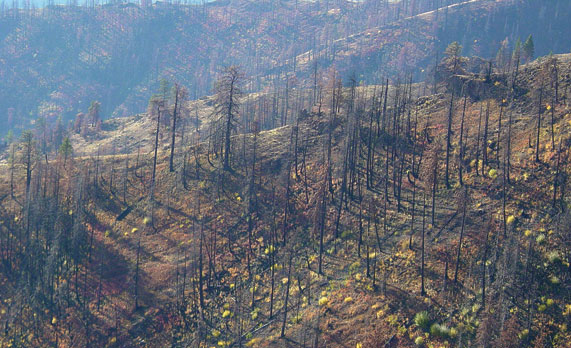Following the 2005 School Fire that burned about 50,000 acres of forests and grasslands on the Umatilla National Forest, Washington, managers wanted to limit weed spread and soil erosion in severely burned areas. Various mulch treatments (wheat straw, wood strand, and hydromulch) were used to control erosion on steep slopes above the Tucannon River Canyon. Locally-collected native grasses were seeded as part of this post-fire treatment, which at the time was the largest in the nation. Post-fire treatment effects on native plant recovery, weed movements, and erosion control were monitored from 2005 to 2011.
Research addressed the following questions:
- How does vegetation respond to varying degrees of burn severity? To post-fire erosion control treatments? To native grass seeding? To salvage logging?
- How do post-fire treatments affect soil biology such as microbial activity?
- How effective are post-fire treatments at reducing erosion?
Related Documents from the Research and Publications Database
Recording(s)
Presenter(s): Peter R. Robichaud, Sarah A. Lewis, Penelope Morgan
Event Details
Apr 29 2015, 11am - 12pm
Hot Topic(s):
